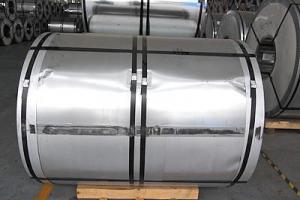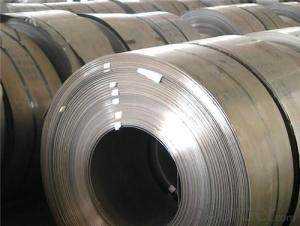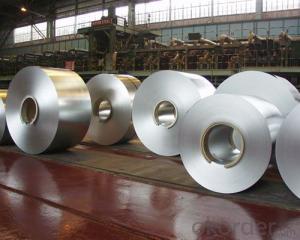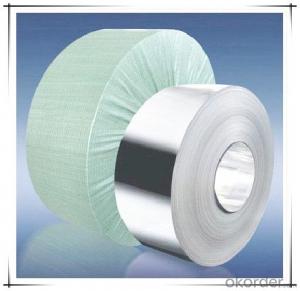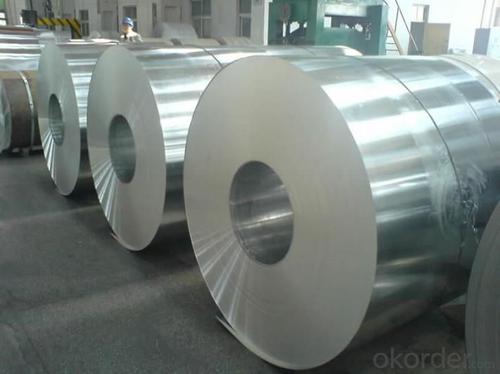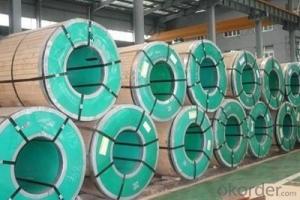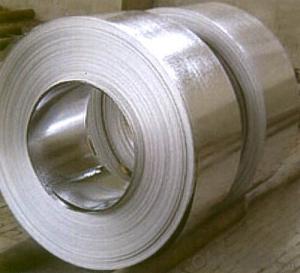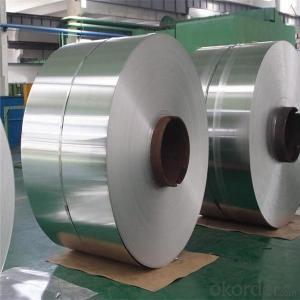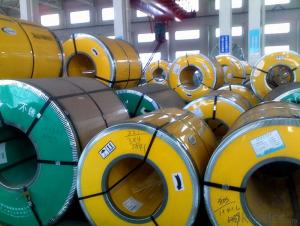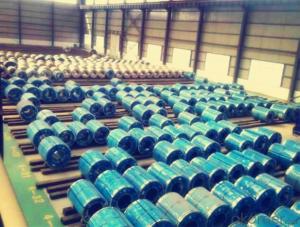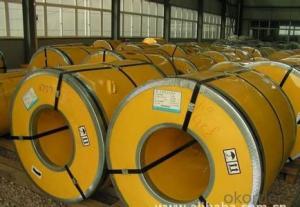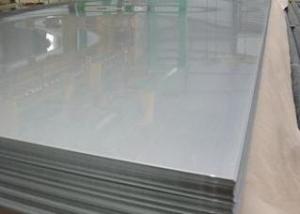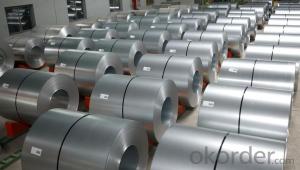PRIME QUALITY 430 STAINLESS STEEL IN COIL
- Loading Port:
- China main port
- Payment Terms:
- TT OR LC
- Min Order Qty:
- 20 m.t.
- Supply Capability:
- 1000 m.t./month
OKorder Service Pledge
OKorder Financial Service
You Might Also Like
Applications of Stainless Steel Coils:
1.Automotive:Automotive trim and molding/Difficult-to-form exhaust-system components, tubular manifolds, mufflers/Exhaust manifold and other exhaust-system components, catalytic converter shells, clamps
2. Construction: Gutters and downspouts, roofing, siding
3. Kitchenware: Cooking utensils, dishwashers, ovens, range hoods, refrigerators, skewers
4. Chemical processing: Oil refinery equipment, oil burner and heater parts
5. Appliances: Hot water tanks, residential furnaces
6. Power generation: Heat Exchanger tubing
7. Farming: Dry fertilizer spreaders/Farm animal pens
Technical notes:
Packaging & Shipping
Packaging is one of the best service of us, in order to prevent the damage from transit, our finished products are packaged carefully. All of our stainless steel sheet products will be transported with steel pallets or wooden pallets. Customers will be guaranteed that the product .they received from Ronsco can go directly into the production and out to the customers as finished product.
- Q: What is the creep strength of stainless steel strips?
- The creep strength of stainless steel strips refers to the ability of the material to resist deformation or creep under high temperatures and constant stress. Stainless steel is known to have good creep strength, making it suitable for applications that involve elevated temperatures and long-term loads.
- Q: Are stainless steel strips suitable for automotive exhaust systems?
- Yes, stainless steel strips are suitable for automotive exhaust systems. Stainless steel is a highly durable and corrosion-resistant material, making it an ideal choice for exhaust systems, which are exposed to high temperatures, moisture, and corrosive gases. Stainless steel strips offer excellent heat resistance, ensuring that the exhaust system can withstand the extreme temperatures generated by the engine. Additionally, stainless steel's resistance to corrosion helps prolong the lifespan of the exhaust system, preventing rust and deterioration. Furthermore, stainless steel strips can be easily formed and welded, allowing for seamless construction and customization of the exhaust system. Overall, stainless steel strips are a reliable and long-lasting option for automotive exhaust systems.
- Q: Are 111 stainless steel strips suitable for cryogenic storage containers?
- Yes, 111 stainless steel strips are suitable for cryogenic storage containers. 111 stainless steel is a type of austenitic stainless steel that is known for its excellent resistance to corrosion and high temperature. It is also known for its strength and durability. These properties make it suitable for use in cryogenic storage containers, which are designed to store materials at extremely low temperatures. The 111 stainless steel strips will be able to withstand the low temperatures without becoming brittle or losing their structural integrity. Additionally, the corrosion resistance of 111 stainless steel will ensure that the containers remain in good condition even when exposed to the moisture present in cryogenic environments. Overall, using 111 stainless steel strips in cryogenic storage containers is a reliable and effective choice.
- Q: What are the common thickness tolerances for stainless steel strips?
- The common thickness tolerances for stainless steel strips can vary depending on the specific requirements and industry standards. However, typical tolerance ranges for stainless steel strips are generally around +/- 0.005 to 0.010 inches or +/- 0.127 to 0.254 millimeters.
- Q: Can 111 stainless steel strips be coated or plated for added protection?
- 111 stainless steel strips have the capability to be coated or plated for extra protection. By adding a protective layer to the strips, their resistance to corrosion, wear, and other types of damage can be improved. The choice of coating or plating material will be determined by the desired level of protection and the intended application of the strips. When it comes to stainless steel, common coating options consist of epoxy, acrylic, and powder coatings, while plating options may include nickel, chrome, or zinc. To ensure the best coating or plating technique is selected, it is essential to thoroughly consider the intended use and environment of the strips.
- Q: Can stainless steel strips be used in food processing industries?
- Yes, stainless steel strips can be used in food processing industries. Stainless steel is highly resistant to corrosion, easy to clean, and has excellent hygiene properties, making it a preferred choice for equipment, machinery, and surfaces in food processing facilities.
- Q: Can stainless steel strips be used in food storage containers?
- Indeed, food storage containers can utilize stainless steel strips. Stainless steel emerges as a favored material selection for these containers due to its numerous advantageous qualities. Notably, it exhibits non-reactivity, implying that it does not engage with or modify the taste, appearance, or aroma of the stored food. Moreover, stainless steel boasts corrosion resistance, endowing it with durability and longevity. On top of that, it proves effortless to clean and maintain, while effectively avoiding the retention of unpleasant odors or unsightly stains. These exceptional attributes render stainless steel strips an optimal alternative for food storage containers, guaranteeing the preservation of freshness, safety, and the prevention of contamination.
- Q: Are 111 stainless steel strips resistant to pitting and crevice corrosion?
- 111 stainless steel strips exhibit resistance to pitting and crevice corrosion. With its high chromium content, stainless steel grade 111, or AISI 111, offers exceptional corrosion resistance. Furthermore, the inclusion of molybdenum further boosts its ability to withstand pitting and crevice corrosion, making it a suitable option for applications where such corrosion is a concern. Consequently, when corrosion resistance is necessary, 111 stainless steel strips prove to be a dependable selection.
- Q: What are the common uses of stainless steel strips in the aerospace structural components?
- Stainless steel strips are commonly used in aerospace structural components due to their high strength, corrosion resistance, and durability. They are used in various applications such as fasteners, brackets, supports, and reinforcements, providing structural integrity and stability to aircraft components. Additionally, stainless steel strips are utilized in the manufacturing of fuel tanks, exhaust systems, and engine parts, where their resistance to extreme temperatures and chemicals is essential.
- Q: What are the common uses of stainless steel strips in the semiconductor industry?
- Due to their unique characteristics and properties, stainless steel strips find a multitude of applications in the semiconductor industry. Some of the key uses are as follows: 1. Semiconductor fabrication involves the use of stainless steel strips as etching masks. These strips possess resistance against different chemical etchants and provide excellent corrosion resistance. Consequently, they are perfect for safeguarding specific areas of the semiconductor surface during the etching process. 2. Throughout the manufacturing process, stainless steel strips are employed for handling delicate silicon wafers. By offering a clean and contamination-free surface, the strips prevent any harm or contamination that could compromise the quality of the wafers. 3. In the construction of cleanrooms within the semiconductor industry, stainless steel strips are commonly utilized. The preference for these strips stems from their high resistance to corrosion, durability, and ability to withstand the harsh cleaning chemicals used in cleanroom maintenance. 4. To prevent damage to sensitive semiconductor components caused by electrostatic discharge (ESD), stainless steel strips function as grounding strips or ESD protection strips. These strips dissipate any static charges, thereby safeguarding the semiconductor devices during the assembly and testing processes. 5. Stainless steel strips are employed in the creation of heat exchangers that regulate temperature during different semiconductor manufacturing processes. The strips' exceptional thermal conductivity and corrosion resistance enable efficient heat transfer while maintaining a clean and sterile environment. 6. The surface mount technology (SMT) process involves the direct mounting of electronic components onto the surface of a printed circuit board. In this process, stainless steel strips serve as solder stencils, enabling the precise application of solder paste onto the board and ensuring accurate component placement during assembly. Overall, stainless steel strips are highly valued in the semiconductor industry due to their corrosion resistance, cleanliness, durability, and ability to withstand extreme conditions. As a result, they play an indispensable role in various stages of semiconductor manufacturing.
Send your message to us
PRIME QUALITY 430 STAINLESS STEEL IN COIL
- Loading Port:
- China main port
- Payment Terms:
- TT OR LC
- Min Order Qty:
- 20 m.t.
- Supply Capability:
- 1000 m.t./month
OKorder Service Pledge
OKorder Financial Service
Similar products
Hot products
Hot Searches
Related keywords

